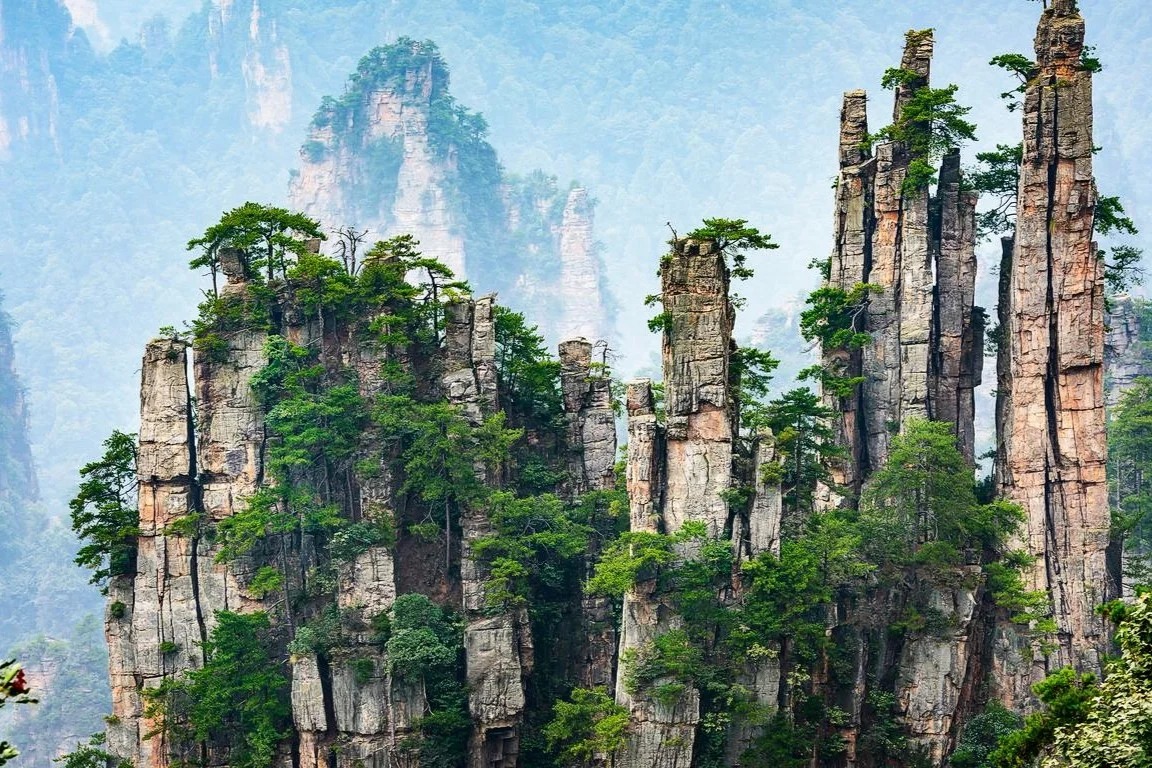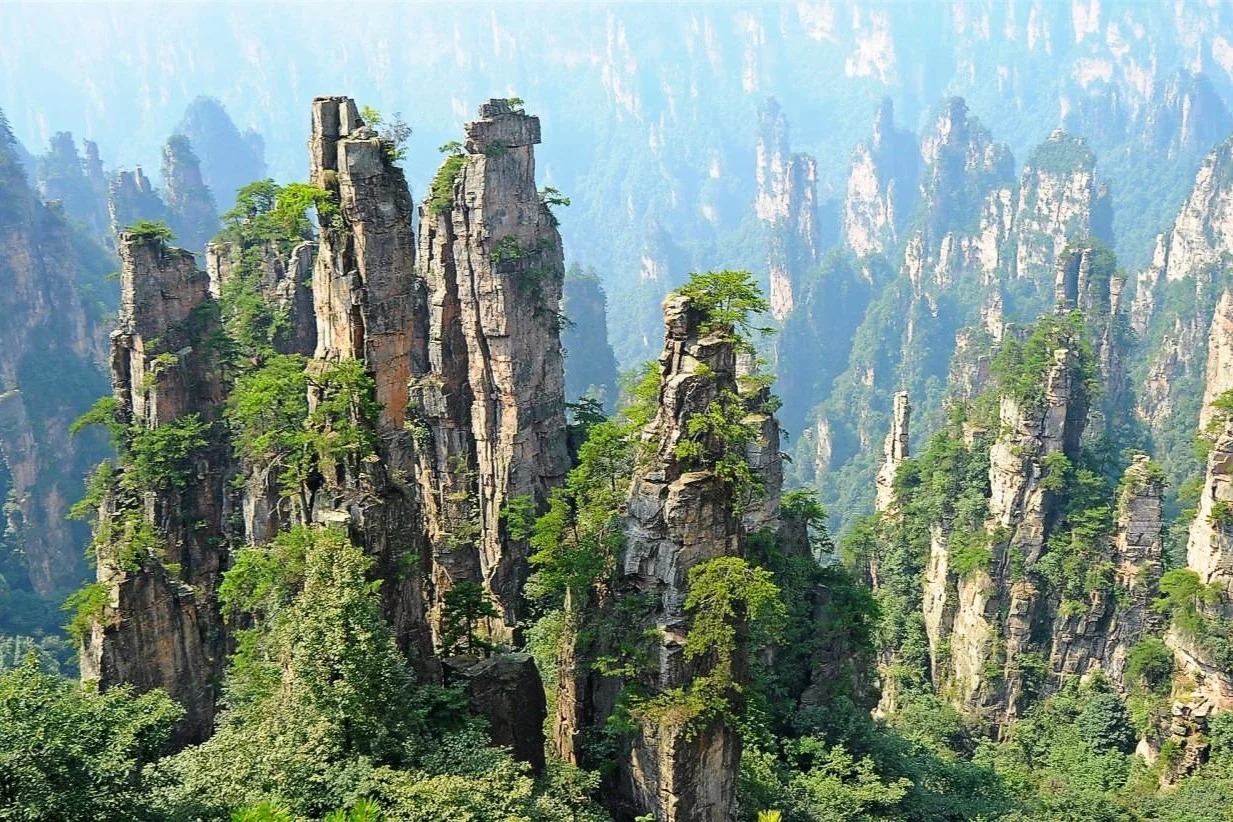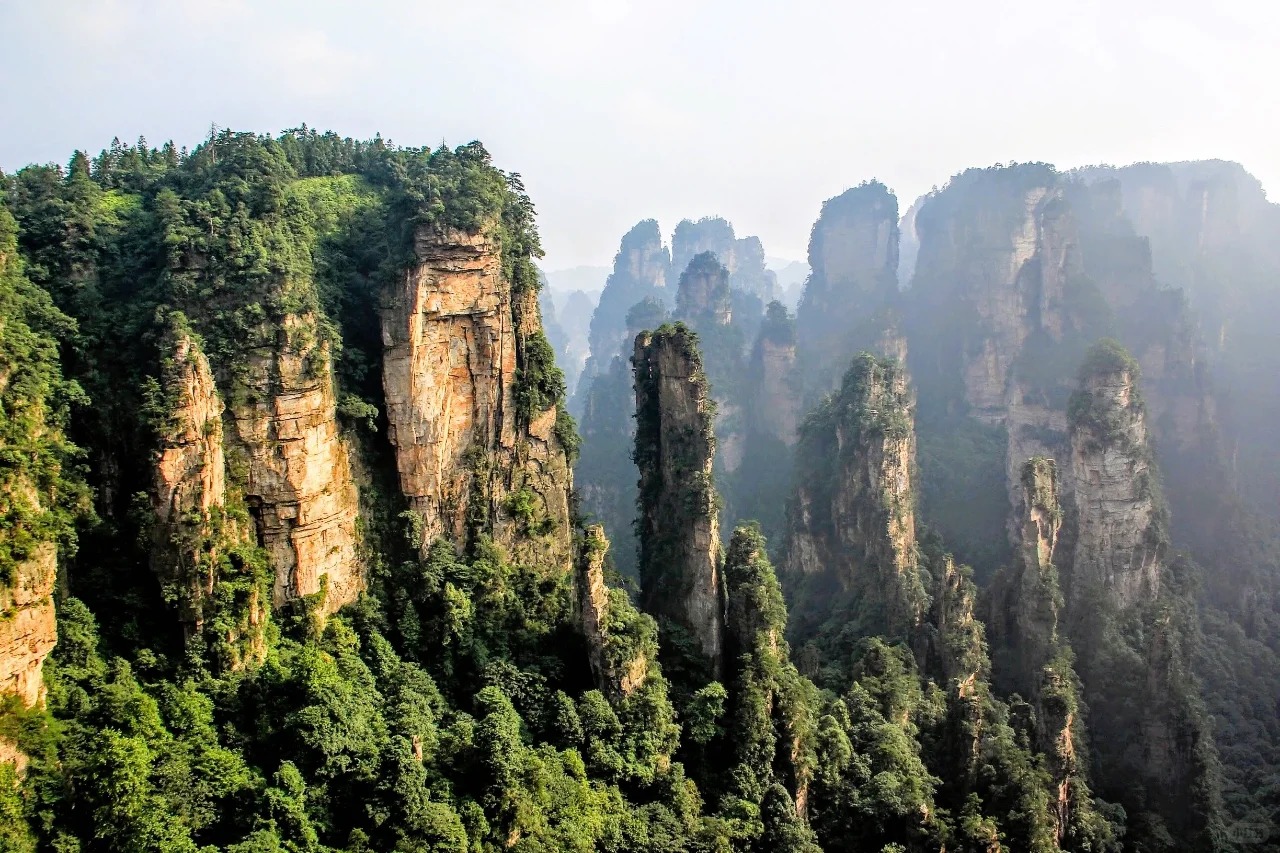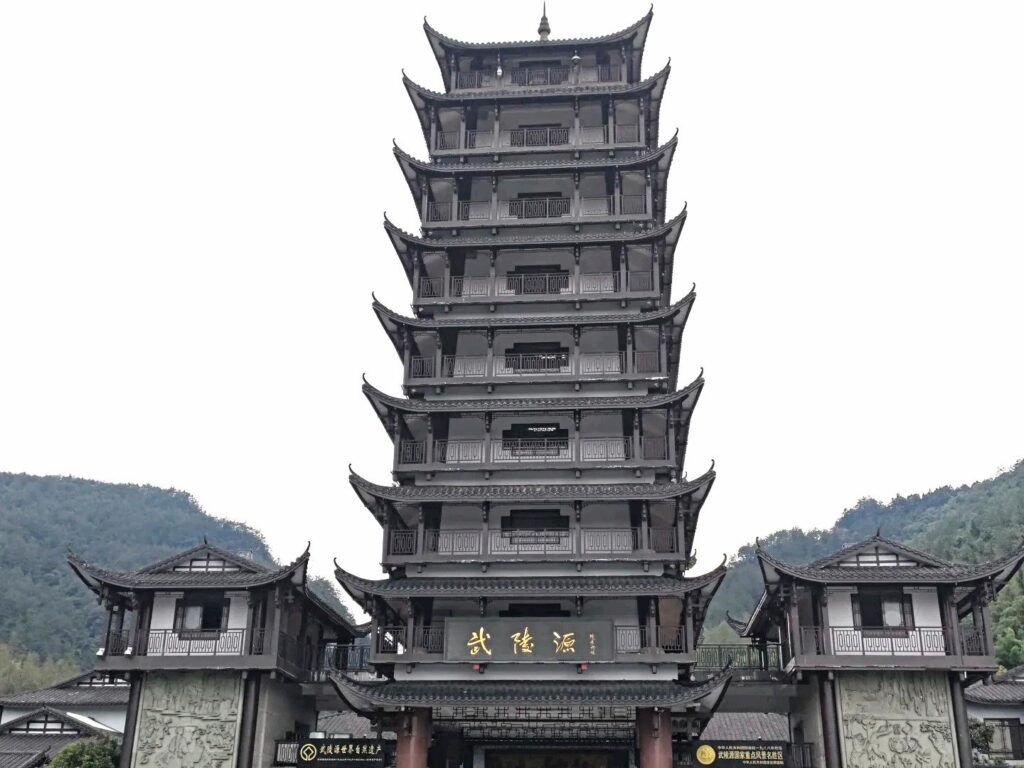Visiting Information
| Information | Details |
|---|---|
| Chinese Name | 张家界国家森林公园 (Zhāngjiājiè Guójiā Sēnlín Gōngyuán) |
| Location and Address | Zhangjiajie City, Hunan Province, China |
| Opening Hours | 7:30 AM – 6:00 PM (May to October) 8:00 AM – 5:00 PM (November to April) |
| Entrance Fee | 248 CNY (valid for 4 days) |
| How to Get There | By Bus: Take bus 1, 2, 3, or 4 from Zhangjiajie city to the park entrance By Taxi: Available from Zhangjiajie city, about 40 minutes drive |
| Best Time for Visit | April to October, with September and October being ideal |
| Contact Info | Phone: +86 744 8369 811 Email: [email protected] |
Overview
Zhangjiajie National Forest Park is a breathtaking natural wonder located in Hunan Province, China. Known for its towering sandstone pillars, dense forests, and misty landscapes, it’s often described as a real-life version of the floating mountains from the movie “Avatar”. The park covers an area of 11,900 acres and is part of the larger Wulingyuan Scenic Area, a UNESCO World Heritage Site.
Historical Background
The area now known as Zhangjiajie National Forest Park has been inhabited for thousands of years, with evidence of human activity dating back to the Neolithic period. However, it remained largely unknown to the outside world until 1979 when the Chinese movie “Visitors on the Ice Mountain” was filmed here, showcasing its stunning landscapes to a wider audience. In 1982, it was recognized as China’s first national forest park. The park gained international fame in 2010 when it was reportedly used as inspiration for the floating Hallelujah Mountains in James Cameron’s “Avatar”, leading to one of its peaks being renamed “Avatar Hallelujah Mountain”.

Natural Features
- Sandstone Pillars: The most iconic feature of Zhangjiajie, these towering quartz-sandstone pillars were formed over millions of years through physical erosion. Some pillars reach heights of over 1,000 meters, creating a surreal, otherworldly landscape.
- Yuanjiajie Scenic Area: This area is home to the famous “Avatar Hallelujah Mountain” and the natural bridge known as the First Bridge under Heaven. It offers some of the most spectacular views in the park.
- Golden Whip Stream: A crystal-clear stream that winds through the park for about 7.5 kilometers, surrounded by lush vegetation and towering cliffs. It’s a popular hiking route known for its natural beauty.
- Tianzi Mountain Nature Reserve: This area is famous for its sea of clouds, where visitors can observe the spectacular sight of peaks emerging from a sea of mist.
- Huangshi Village: Located on the top of a mountain, this area offers panoramic views of the surrounding landscape, including hundreds of peaks and pillars.
Cultural Importance
Zhangjiajie National Forest Park holds significant cultural importance, particularly for the Tujia, Miao, and Bai ethnic minorities who have inhabited the area for generations. The park’s landscapes have inspired countless Chinese poems, paintings, and legends. The unique geology of the area has also contributed to local folklore, with many rock formations and peaks named after characters or objects from Chinese mythology. Today, the park serves as a symbol of China’s natural beauty and is a source of national pride, attracting millions of domestic and international visitors each year.
Surrounding Attractions
- Zhangjiajie Grand Canyon Glass Bridge: Located about 20 kilometers from the park, this is the world’s longest and highest glass-bottomed bridge. Suspended 300 meters above the canyon floor, it offers thrilling views and has become a major attraction in its own right.
- Baofeng Lake: A scenic lake surrounded by mountains, located just outside the park. Visitors can take boat rides to enjoy the tranquil waters and surrounding landscape.
- Yellow Dragon Cave: One of the largest karst caves in China, featuring underground rivers, waterfalls, and stunning limestone formations. It’s located about 30 kilometers from the park.
- Tianmen Mountain: Famous for its natural arch (Tianmen Cave) and glass walkways along cliff faces, this mountain offers breathtaking views and is accessible by the world’s longest cable car ride from Zhangjiajie city.

Photography Opportunities
- Sunrise at Tianzi Mountain: The sea of clouds at sunrise creates a mystical atmosphere, with mountain peaks emerging from the mist. This scene offers incredible opportunities for landscape photography.
- Avatar Hallelujah Mountain: This iconic pillar, especially when shrouded in mist, provides a surreal subject for photography. The viewing platform at Yuanjiajie offers the best vantage point.
- Golden Whip Stream: The clear waters reflecting the surrounding cliffs and lush vegetation offer beautiful compositions, especially in the soft light of early morning or late afternoon.
- Bailong Elevator: This glass elevator, built on the side of a cliff, offers unique perspectives of the park’s landscape during the ascent or descent.
- Wildlife Photography: The park is home to numerous species of birds, monkeys, and other wildlife, offering opportunities for nature and wildlife photography enthusiasts.
Modern Importance
- Eco-Tourism: Zhangjiajie National Forest Park is at the forefront of China’s eco-tourism industry. It serves as a model for sustainable tourism development, balancing conservation efforts with visitor access.
- Scientific Research: The unique geology and biodiversity of the park make it an important site for scientific research in fields such as geology, botany, and zoology.
- Economic Impact: The park plays a crucial role in the local economy, providing employment and driving tourism-related businesses in the region.
- Environmental Conservation: As a protected area, the park contributes significantly to biodiversity conservation and the preservation of unique geological features.
- Cultural Preservation: The park helps preserve the cultural heritage of local ethnic minorities and promotes cultural exchange through tourism.

FAQ
- What is Zhangjiajie National Forest Park famous for?
Zhangjiajie National Forest Park is famous for its unique landscape of towering sandstone pillars, lush forests, and misty scenery. It’s particularly known for inspiring the floating mountains in the movie “Avatar”. - What’s inside Zhangjiajie National Forest Park?
Inside the park, visitors can find towering sandstone pillars, scenic areas like Yuanjiajie and Tianzi Mountain, hiking trails along Golden Whip Stream, and various viewing platforms offering panoramic vistas. - Is Zhangjiajie National Forest Park free?
No, Zhangjiajie National Forest Park is not free. There is an entrance fee of 248 CNY, which is valid for four days. - Is Zhangjiajie National Forest Park worth visiting?
Yes, Zhangjiajie National Forest Park is generally considered very worth visiting. Its unique landscape offers breathtaking views and experiences that can’t be found anywhere else in the world. - What to do in Zhangjiajie National Forest Park?
Visitors can hike various trails, take cable car rides for panoramic views, visit scenic spots like Yuanjiajie and Tianzi Mountain, enjoy the view from glass walkways, and photograph the stunning landscapes. - How do I get to Zhangjiajie National Forest Park in the local city?
From Zhangjiajie city, you can take buses 1, 2, 3, or 4 directly to the park entrance. Alternatively, taxis are available for the approximately 40-minute drive from the city to the park. - How to visit Zhangjiajie National Forest Park?
To visit, purchase a multi-day ticket at the entrance. Plan to spend at least 2-3 days exploring different areas of the park. Wear comfortable shoes for hiking, bring warm layers as temperatures can vary, and consider hiring a guide to help navigate the large park and learn about its features. Use the park’s shuttle buses to move between different scenic areas.




